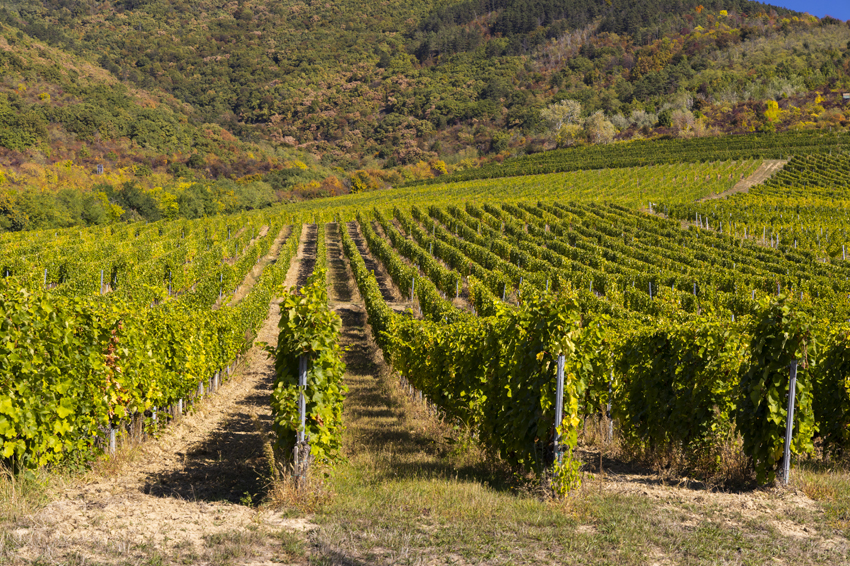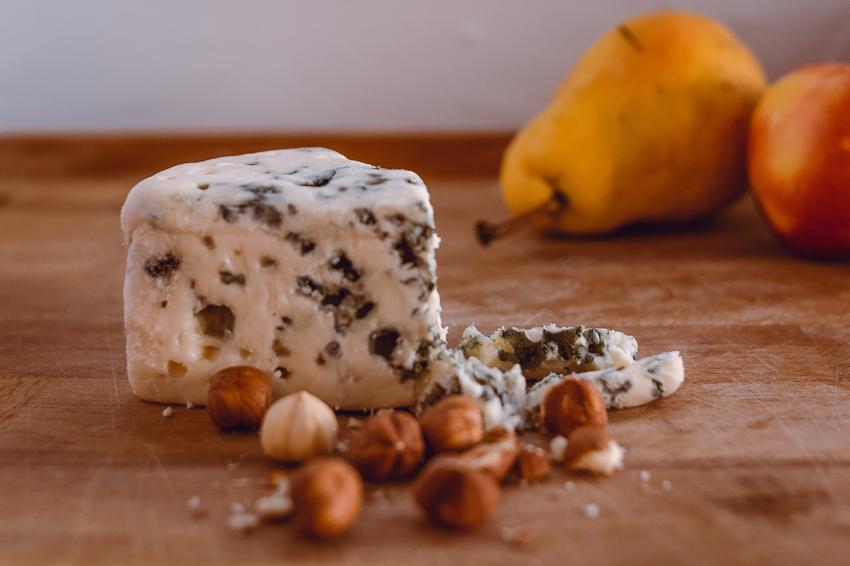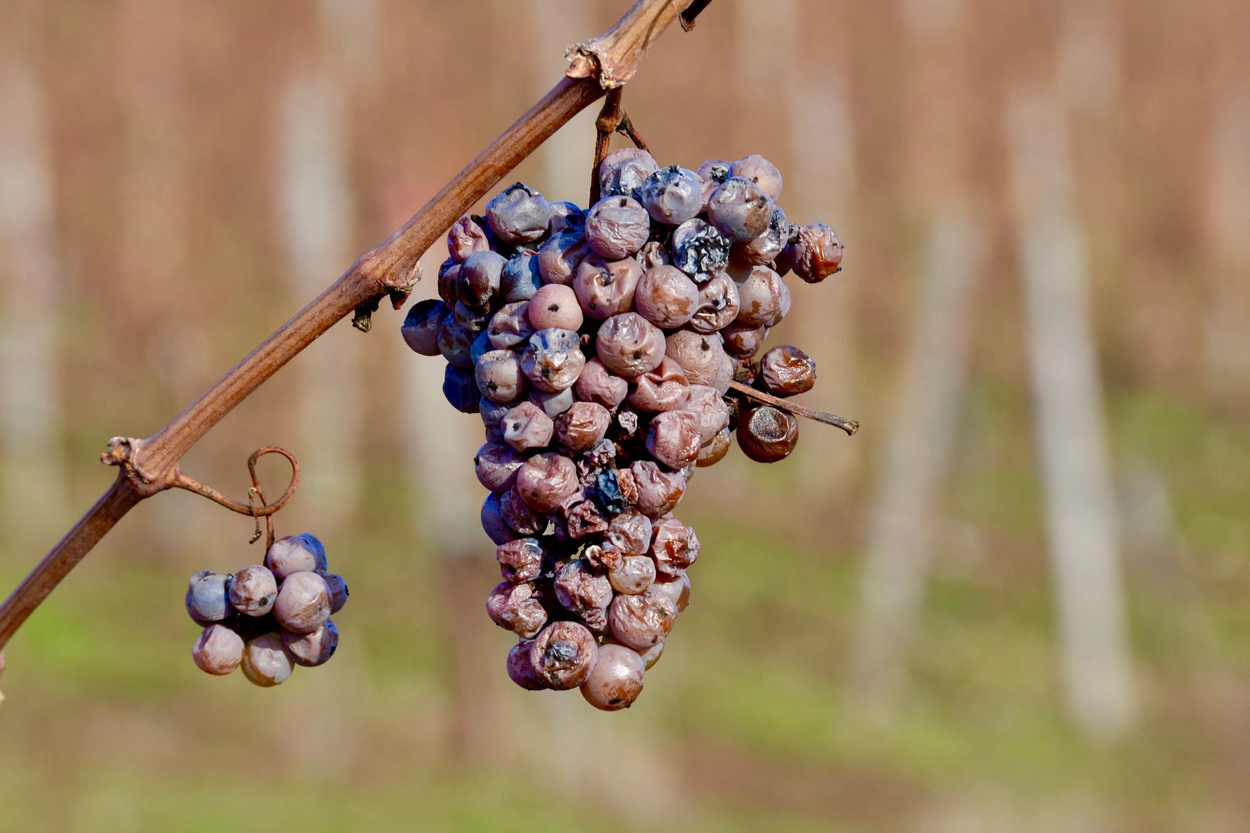Tokaj is a historical wine region located in foothills of the Zemplon mountain in north-eastern Hungary. The history of wine production in Tokaj dates back to the 12th century and is one of the first wine regions with a vineyard classification system (established in 1730). The region was declared a UNESCO World Heritage site in 2002.
Native grapes; Furmint and Hárslevelü are the main varieties used, which have been cultivated for centuries in this area. They are planted in soil consisting of clay or loess soil on volcanic subsoil. South-facing slopes and the proximity of the Tisza and Bodrog rivers make the region conducive to the proliferation of Botrytis (noble rot) and the subsequent production of the famous Aszú sweet wines.
What is Tokaji Aszú ?
Aszú is the Hungarian word for the botrytised, shrivelled grapes from which this legendary sweet wine is made. Botrytis Cinerea is a fungus that occurs in moist morning conditions and attacks heathy grapes, perforating the skin and allowing the water to evaporate. When the grapes dry out in the sunny, breezy afternoons, they shrivel and the sugars are concentrated along with the acids and flavour. The grapes are hand harvested, crushed and allowed to macerate to further develop flavour and colour. The minimum ageing period for Tokaji Aszú is two years in total, with at least 18 months in barrel, though producers may choose to age for longer.


How sweet is Tokaji Aszú?
The sweetness level of Aszú wines are measured in Puttonyos which is a classification based on the amount of residual sugar in the final wine. Five Puttonyos must contain at least 120g/l residual sugar and six Puttonyos must contain at least 150g/l of residual sugar. All Aszú wines must have at least 5 Puttonyos (the 3 and 4 Puttonyos classifications were abandoned in 2013), even if this is not stated on the label. The high sugar levels are perfectly balanced by the incredible levels of refined and refreshing acidity in the wines so they never taste heavy or cloying. The wine is complex and luscious, the typical characteristics include honey, ginger, apricot, tangerine, pineapple and beeswax.
Foods to pair with Tokaji Aszú
The classic pairing is Foie Gras but a blue cheese such as Roquefort or Stilton works well too. This is because the sweetness in the wine tempers the saltiness in the food. The high acidity cuts through any richness, creaminess or fattiness, keeping the palate refreshed. If you are going to pair with a dessert, you need to match sweetness with sweetness, therefore the wine needs to be at least as sweet as the dessert. Fruit-based desserts like apple crumble and poached pears are great matches for this amber nectar. Serve lightly chilled.


Our top Tokaji Aszú recommendations


Chateau Dereszla, Tokaji Aszú 5 Puttonyos, 2017
Château Dereszla is one of the most iconic estates in Tokaji, boasting a rich history that dates back over 500 years. After many years of neglect, the winery was purchased in 2000 by the d’Aulan family from Champagne, who have invested and renovated the property and introduced state-of-the-art winemaking technology, allowing Dereszla to return to its former glory. As such, it is now proudly held in the highest regards alongside esteemed peers such as Royal Tokaj, Mád, and Disznóko, producing both dry (Furmint and Tokaj) and sweet (Aszu) wines from native varietals such as Furmint, Hárslevelü, and Muskotály.
This is an intense wine with an attractive nose of lemon curd and candied orange with added honey and marmalade undertones. Concentrated and complex with a creamy, rounded texture underpinned by fresh, uplifting acidity that leads into a fine, seamless finish of peach, apricot and Seville Orange marmalade. Delicious.


Mád Wine, Tokaj Aszú, 2013
Based in the village of Mád, in the heart of the Tokaji region, Mád Wine is a co-operative where producers toil the vineyards shaped by volcanic eruptions millions of years ago. They understand that this unique volcanic terroir is the key to producing exceptional sweet wines with depth, character, and complexity.
Rich, enticing aromas of lemon curd, toffee apple, honey and quince marmalade. Unctuous and luscious on the mid-palate balanced by bright, uplifting acidity that adds another dimension - so complex and moreish! Further orange citrus on the core with added marmalade, quince and caramel undertones leading into a long, persistent finish.






